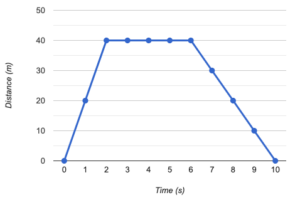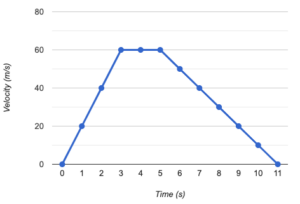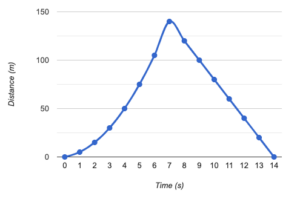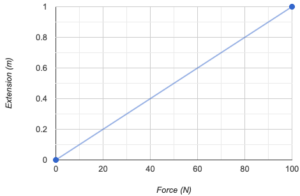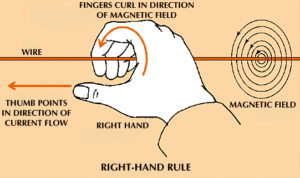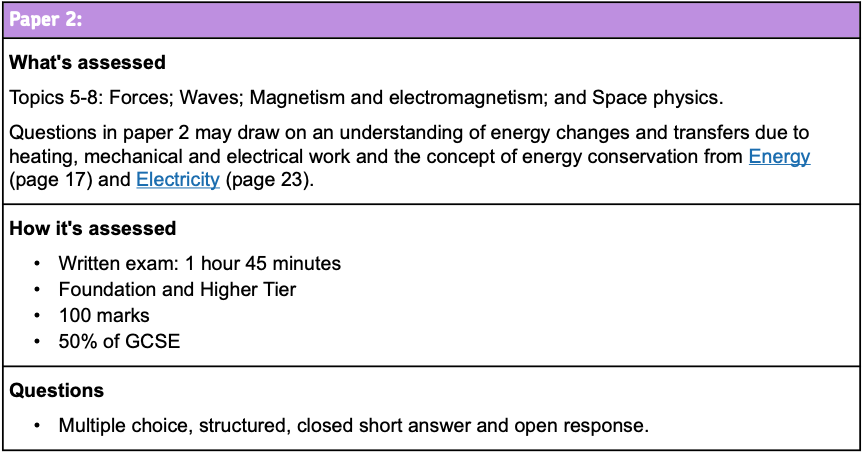Mock test. 100 marks available.
GCSE AQA Phyics Paper 2
Good Luck!
Quiz Summary
0 of 49 Questions completed
Questions:
Information
You have already completed the quiz before. Hence you can not start it again.
Quiz is loading…
You must sign in or sign up to start the quiz.
You must first complete the following:
Results
Results
0 of 49 Questions answered correctly
Your time:
Time has elapsed
You have reached 0 of 0 point(s), (0)
Earned Point(s): 0 of 0, (0)
0 Essay(s) Pending (Possible Point(s): 0)
| Average score |
|
| Your score |
|
Categories
- Not categorized 0%
- 6 Mark Questions 0%
- 1
- 2
- 3
- 4
- 5
- 6
- 7
- 8
- 9
- 10
- 11
- 12
- 13
- 14
- 15
- 16
- 17
- 18
- 19
- 20
- 21
- 22
- 23
- 24
- 25
- 26
- 27
- 28
- 29
- 30
- 31
- 32
- 33
- 34
- 35
- 36
- 37
- 38
- 39
- 40
- 41
- 42
- 43
- 44
- 45
- 46
- 47
- 48
- 49
- Current
- Review
- Answered
- Correct
- Incorrect
-
Question 1 of 49
1. Question
4 point(s)[question number = 01.1] Drag and drop to match the quantity with the example
Sort elements
- Scalar
- Vector
- Speed
- Momentum
-
Mass
-
Weight
-
Scalar
-
Vector
CorrectIncorrect -
Question 2 of 49
2. Question
1 point(s)[question number = 01.2] Drag and drop to match the description to the type of quantity
Sort elements
- Vectors
- Scalars
-
Have both magnitude and direction
-
Only have magnitude
CorrectIncorrect -
Question 3 of 49
3. Question
4 point(s)[question number = 01.3] Drag and drop to match the quantity with the correct type
Sort elements
- Vector
- Scalar
- Energy
- Velocity
-
Acceleration
-
Distance
-
Scalar
-
Vector
CorrectIncorrect -
Question 4 of 49
4. Question
1 point(s)[question number = 02.1] If a car experiences a resultant force in the forwards direction, what will happen to the motion of the car?
CorrectIncorrect -
Question 5 of 49
5. Question
3 point(s)[question number = 02.2] Drag and drop to match the description to the Law of Motion
Sort elements
- Newton's 1st Law
- Newton's 2nd Law
- Newton's 3rd Law
-
Objects in motion stay in motion and objects at rest stay at rest (unless acted upon by a resultant force)
-
F = MA (resultant force = mass x acceleration
-
Every action has an equal and opposite reaction
CorrectIncorrect -
Question 6 of 49
6. Question
2 point(s)[question number = 02.3]
-
Complete the equation for resultant force (Newton’s Second Law). Force = x
Correct 2 / 2 PointsIncorrect / 2 Points -
-
Question 7 of 49
7. Question
1 point(s)[question number = 02.4] In an equilibrium situation – the forces between two objects are?
CorrectIncorrect -
Question 8 of 49
8. Question
1 point(s)[question number = 02.5] Calculate the force of a ball with a mass of 15kg that is accelerated at 2m/s²?
-
N
CorrectIncorrect -
-
Question 9 of 49
9. Question
1 point(s)[question number = 03.1] Calculate the mass of a vehicle with a momentum of 42000 kg m/s and a velocity of 25 m/s.
-
kg
CorrectIncorrect -
-
Question 10 of 49
10. Question
1 point(s)[question number = 03.2] Calculate the force when an object changes its momentum by 2550 kg m/s in 5 seconds.
-
N
CorrectIncorrect -
-
Question 11 of 49
11. Question
1 point(s)[question number = 04.1] Determine the speed of the object between 0 and 2 seconds.
-

m/s
CorrectIncorrectHint
answer to 2 decimal places
calculate the gradient.
-
-
Question 12 of 49
12. Question
1 point(s)[question number = 04.2] Calculate the distance travelled by the runner in the velocity/time graph.
-

m
CorrectIncorrect -
-
Question 13 of 49
13. Question
1 point(s)[question number = 04.3] What is happening to the speed of the object in the graph between 0 and 7 seconds?
Use one of the following options: Accelerating, decelerating, no change in velocity.CorrectIncorrect -
-
Question 14 of 49
14. Question
2 point(s)[question number = 05.1]
-
Force exerted on a spring = x
Correct 2 / 2 PointsIncorrect / 2 Points -
-
Question 15 of 49
15. Question
1 point(s)[question number = 05.2] Calculate the spring constant for a spring with an extension of 25mm and a force exerted of 1.6 N
-
N/m
CorrectIncorrect -
-
Question 16 of 49
16. Question
1 point(s)[question number = 05.3] Calculate the force exerted on a spring with an extension of 40cm and a spring constant of 12.5 N/m (Equation)
-
N
CorrectIncorrect -
-
Question 17 of 49
17. Question
6 point(s)[question number = 05.4] Students in a physics class have been learning about Hooke’s Law and want to learn more.
Plan an investigation to determine the relationship between the force applied to a spring and its extension. (enter your answer)
You should include:
- how to set up the apparatus and the materials you would use
- how to collect and record data
- how to ensure accuracy and reliability of results.
Correct 6 / 6 PointsIncorrect / 6 Points -
Question 18 of 49
18. Question
1 point(s)[question number = 05.5] What will happen if only one force is applied to an object?
CorrectIncorrect -
Question 19 of 49
19. Question
2 point(s)[question number = 05.6] Which two things happen if you stretch a spring too far?
CorrectIncorrect -
Question 20 of 49
20. Question
1 point(s)[question number = 05.7] The image shows the relationship between force and extension for a spring. What kind of relationship is this?
 CorrectIncorrect
CorrectIncorrect -
Question 21 of 49
21. Question
1 point(s)[question number = 06.1] Which of these is an example of transverse waves?
CorrectIncorrect -
Question 22 of 49
22. Question
1 point(s)[question number = 06.2] What happens to the speed of light waves when they go from air to water?
CorrectIncorrect -
Question 23 of 49
23. Question
1 point(s)[question number = 06.3] Which layer of the Earth’s atmosphere absorbs ultraviolet light?
CorrectIncorrect -
Question 24 of 49
24. Question
1 point(s)[question number = 06.4] What do we call the boundary between two different mediums?
CorrectIncorrect -
Question 25 of 49
25. Question
1 point(s)[question number = 06.5] Place the types of electromagnetic radiation in order from longest wavelength to shortest wavelength
-
Ultraviolet
-
Gamma rays
-
Microwaves
-
Visible light
-
Radio waves
-
Infrared waves
-
X rays
View Answers:
CorrectIncorrect -
-
Question 26 of 49
26. Question
1 point(s)[question number = 06.6] No refraction takes place if a wave is travelling along which line?
CorrectIncorrect -
Question 27 of 49
27. Question
1 point(s)[question number = 06.7] What kind of waves are electromagnetic waves?
CorrectIncorrect -
Question 28 of 49
28. Question
4 point(s)[question number = 06.8] Drag and drop to match the wave to the correct type
Sort elements
- Transverse
- Electromagnetic waves
- Longitudinal
- Sound waves
-
Guitar string vibrations
-
Transverse
-
Seismic P waves
-
Longitudinal
CorrectIncorrect -
Question 29 of 49
29. Question
1 point(s)[question number = 06.9] What is the equation relating wave speed (v) distance (x) and time (t)?
CorrectIncorrect -
Question 30 of 49
30. Question
1 point(s)[question number = 07.1] What devices are used to determine the shape of a magnetic field around a bar magnet?
CorrectIncorrect -
Question 31 of 49
31. Question
1 point(s)[question number = 07.2] Where are magnetic forces strongest?
CorrectIncorrect -
Question 32 of 49
32. Question
3 point(s)[question number = 07.3] Which of the following are uses for magnets?
CorrectIncorrect -
Question 33 of 49
33. Question
4 point(s)[question number = 07.4] Which of the following metals are magnetic?
CorrectIncorrect -
Question 34 of 49
34. Question
1 point(s)[question number = 07.5] Use one of the following words to fill in the blank:
Volcanic, magnetic, compression, refraction-
Fill in the blank: A current flowing through a wire causes a field.
CorrectIncorrectHint
Use one of the following words:
magnetic
volcanic
electric
solar
-
-
Question 35 of 49
35. Question
1 point(s)[question number = 07.6] This diagram shows the direction of a magnetic field caused by a current flowing through a conductor. Where is the magnetic field strongest?
(a – closest to the wire) (b – further away from the wire) (c – at a middle distance from the wire)-

Enter the letter of your choice from the options above the image.
CorrectIncorrect -
-
Question 36 of 49
36. Question
1 point(s)[question number = 08.1] Convert 6.5 x 10⁴ to ordinary form
CorrectIncorrect -
Question 37 of 49
37. Question
1 point(s)[question number = 08.2] Convert 42,000 to standard form
-
x 10
CorrectIncorrect -
-
Question 38 of 49
38. Question
1 point(s)[question number = 08.3] Convert 59 cm to km
-
km
CorrectIncorrect -
-
Question 39 of 49
39. Question
6 point(s)[question number = 09.5] Use some of the following words to fill in the blanks: You can use each word more than once.
Forces, indecision, interact, combined, pairs, contact, vectors, nested
-
Complete the statements.
- Objects by exerting on each other.
- When objects are touching, these forces are called forces.
- When objects are at a distance, these forces are called non- forces.
- When two objects interact they produce of forces which can be represented as .
CorrectIncorrect -
-
Question 40 of 49
40. Question
2 point(s)[question number = 10.1] Select all statements that correctly describe how pressure changes in a liquid:
CorrectIncorrect -
Question 41 of 49
41. Question
1 point(s)[question number = 10.2] Calculate the height of a column of water (density 1000 kg/m³) that creates a pressure of 33,320 Pa. Use gravitational field strength of 9.8 N/kg.
-
m
CorrectIncorrect -
-
Question 42 of 49
42. Question
1 point(s)[question number = 11.1] What is the relationship between temperature and radiation emission?
CorrectIncorrect -
Question 43 of 49
43. Question
3 point(s)[question number = 11.2] Select all statements that are true for a perfect black body.
CorrectIncorrect -
Question 44 of 49
44. Question
2 point(s)[question number = 12.1] Select all characteristics of an opaque object.
CorrectIncorrect -
Question 45 of 49
45. Question
2 point(s)[question number = 12.2] Select all correct characteristics of a concave lens.
CorrectIncorrect -
Question 46 of 49
46. Question
2 point(s)[question number = 12.3] Use some of the following answers to fill in the blanks:
Black, white, all colours, none-
If an object reflects equally, it appears .
CorrectIncorrect -
-
Question 47 of 49
47. Question
4 point(s)[question number = 13.1] Use some of the following answers to fill in the blanks:
Neutron star, black hole, supernova, red super giant, yellow dwarf, nova-
After a explodes in a , it can form either a or a depending on its remaining mass.
CorrectIncorrect -
-
Question 48 of 49
48. Question
2 point(s)[question number = 13.2] Select all observations that support the Big Bang theory.
CorrectIncorrect -
Question 49 of 49
49. Question
2 point(s)[question number = 13.3] Use some of the following answers to fill in the blanks:
Big Bang, dense, expanding, light, heavy-
The theory suggests the universe started from a hot and extremely state.
CorrectIncorrect -
Is this higher or foundation?
This is a combined paper for higher and foundation students. You can achieve grades 1 – 9 on this paper, so it is suitable for all. Grades are moderated against the average result to give the most accurate indication of your performance. You can look at – How is this paper marked? for more information.
How is this paper marked?
This paper is automatically marked to determine which questions were answered correctly.
Your grade is determined using a Z-Score moderation system. Your GCSE exams are also moderated comparably so that the difficulty of papers is taken into account.
Roughly, this works by calculating your overall percentage and comparing it to the average percentage and the standard deviation. This means that for harder papers you need fewer points to get the same grade as you would for an easier paper.
As more students attempt the paper, the average score and standard deviation more accurately represent the difficulty of the paper and the grades become more accurate.
Making these papers and the marking system took considerable effort so if you found them helpful for your revision, please show your appreciation by rating the page.
Related Quizzes
Which exam board are you studying?

